Potřebujeme váš souhlas k využití jednotlivých dat, aby se vám mimo jiné mohly ukazovat informace týkající se vašich zájmů. Souhlas udělíte kliknutím na tlačítko „OK“.
ASTM D7078/D7078M-12
Standard Test Method for Shear Properties of Composite Materials by V-Notched Rail Shear Method
Automaticky přeložený název:
Standardní zkušební metoda pro smyk kompozitních materiálů V-zubovou Rail smyku Metoda
NORMA vydána dne 15.7.2012
Informace o normě:
Označení normy: ASTM D7078/D7078M-12
Poznámka: NEPLATNÁ
Datum vydání normy: 15.7.2012
Kód zboží: NS-37495
Počet stran: 15
Přibližná hmotnost: 45 g (0.10 liber)
Země: Americká technická norma
Kategorie: Technické normy ASTM
Kategorie - podobné normy:
Anotace textu normy ASTM D7078/D7078M-12 :
Keywords:
composite materials, in-plane shear, interlaminar shear, shear modulus, shear properties, shear strength, shear testing, ICS Number Code 83.120 (Reinforced plastics), 83.140.20 (Laminated sheets)
Doplňující informace
| Significance and Use | ||||||||||||||||||||||||||||||||||||||||||||
|
5.1 This shear test is designed to produce shear property data for material specifications, research and development, quality assurance, and structural design and analysis. Either in-plane or interlaminar shear properties may be evaluated, depending upon the orientation of the material coordinate system relative to the loading axis. Factors that influence the shear response and should therefore be reported include: material, methods of material preparation and lay-up, specimen stacking sequence, specimen preparation, specimen conditioning, environment of testing, specimen alignment and gripping, speed of testing, time at temperature, void content, and volume percent reinforcement. 5.2 In anisotropic materials, properties may be obtained in any of the six possible shear planes by orienting the testing plane of the specimen with the desired material plane (1-2 or 2-1, 1-3 or 3-1, 2-3 or 3-2). Only a single shear plane may be evaluated for any given specimen. Properties, in the test direction, which may be obtained from this test method, include the following: 5.2.1 Shear stress versus engineering shear strain response, 5.2.2 Ultimate shear strength, 5.2.3 Ultimate engineering shear strain, 5.2.4 Shear chord modulus of elasticity, |
||||||||||||||||||||||||||||||||||||||||||||
| 1. Scope | ||||||||||||||||||||||||||||||||||||||||||||
|
1.1 This test method covers the determination of the shear properties of high-modulus fiber-reinforced composite materials by clamping the ends of a V-notched specimen between two pairs of loading rails. When loaded in tension, the rails introduce shear forces into the specimen through the specimen faces. In comparison, the specimen of Test Method D5379/D5379M is loaded through its top and bottom edges. Face loading allows higher shear forces to be applied to the specimen, if required. Additionally, the present test method utilizes a specimen with a larger gage section than the V-notched specimen of Test Method D5379/D5379M. In both test methods, the use of a V-notched specimen increases the gage section shear stresses in relation to the shear stresses in the vicinity of the grips, thus localizing the failure within the gage section while causing the shear stress distribution to be more uniform than in a specimen without notches. In comparison, Test Method D4255/D4255M utilizes an unnotched specimen clamped between two pairs of loading rails that are loaded in tension. Also in contrast to Test Method D4255/D4255M, the present test method provides specimen gripping without the need for holes in the specimen. The composite materials are limited to continuous-fiber or discontinuous-fiber-reinforced composites in the following material forms: 1.1.1 Laminates composed only of unidirectional fibrous laminae, with the fiber direction oriented either parallel or perpendicular to the fixture rails. 1.1.2 Laminates of balanced and symmetric construction, with the 0° direction oriented either parallel or perpendicular to the fixture rails. 1.1.3 Laminates composed of woven, braided, or knitted fabric filamentary laminae. 1.1.4 Short-fiber-reinforced composites with a majority of the fibers being randomly distributed. 1.2 The values stated in either SI units or inch-pound units are to be regarded separately as standard. Within the text the inch-pound units are shown in brackets. The values stated in each system are not exact equivalents; therefore, each system must be used independently of the other. Combining values from the two systems may result in nonconformance with the standard. 1.3 This standard does not purport to address all of the safety concerns, if any, associated with its use. It is the responsibility of the user of this standard to establish appropriate safety and health practices and determine the applicability of regulatory limitations prior to use. |
||||||||||||||||||||||||||||||||||||||||||||
| 2. Referenced Documents | ||||||||||||||||||||||||||||||||||||||||||||
|
Podobné normy:
Historická
15.11.2011
Historická
1.4.2012
Historická
1.12.2011
Historická
1.8.2014
Historická
1.11.2013
Historická
1.11.2012
Doporučujeme:
Aktualizace technických norem
Chcete mít jistotu, že používáte pouze platné technické normy?
Nabízíme Vám řešení, které Vám zajistí měsíční přehled o aktuálnosti norem, které používáte.
Chcete vědět více informací? Podívejte se na tuto stránku.


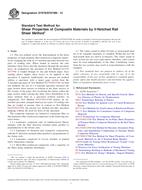
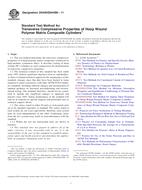 ASTM D5449/D5449M-11..
ASTM D5449/D5449M-11..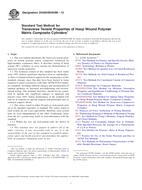 ASTM D5450/D5450M-12..
ASTM D5450/D5450M-12..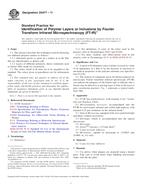 ASTM D5477-11
ASTM D5477-11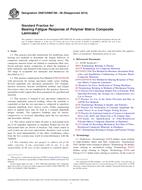 ASTM D6873/D6873M-08..
ASTM D6873/D6873M-08.. ASTM D709-13
ASTM D709-13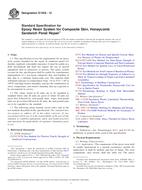 ASTM E1556-12
ASTM E1556-12
 Cookies
Cookies
